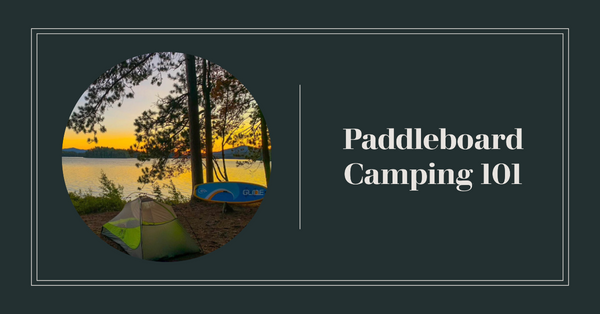
Paddleboard Camping 101: Everything You Need to Know for the Ultimate Adventure.
Paddleboard camping is an exhilarating way to combine your love for stand-up paddle boarding (SUP) with the joys of camping and exploring the great outdoors. Imagine paddling to a remote, secluded location and setting up camp for the night, surrounded by nature and away from the hustle and bustle of everyday life. In this comprehensive guide, we'll cover everything you need to know to plan and execute the perfect paddleboard camping adventure, from selecting the right gear to finding the best spots and ensuring a safe, enjoyable experience.
Key Highlights
-
Choosing the Right Equipment: Essential gear includes a stable paddleboard like the Glide O2 Angler, lightweight paddle, PFD, dry bags, compact camping gear, quick-dry clothing, and navigation tools. Don't forget the Glide cooler for dual use as storage and a seat.
-
Finding the Perfect Location: Opt for calm waters, accessible sites with scenic views, and ensure you're aware of any permits or regulations. Prioritize places with camping amenities for a comfortable stay.
-
Planning Your Route: Determine your daily paddling distance based on your ability and the weather. Include points of interest and rest times in your itinerary. Always have a contingency plan.
-
Paddleboarding and Camping Safety Tips: Always wear a PFD, check weather conditions, practice Leave No Trace ethics, be aware of surroundings, and ensure your inflatable SUP has a repair kit. Inform someone of your plans.
-
Making the Most of Your Experience: Capture your adventure with waterproof cameras, enjoy the solitude, explore hiking trails, and share your experiences to inspire others.
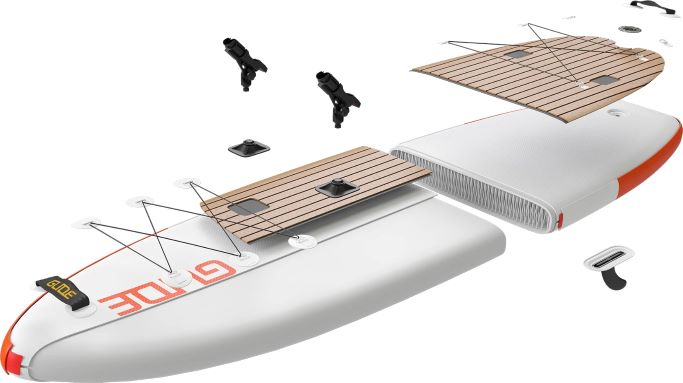
Paddleboard camping combines the thrill of stand-up paddleboarding (SUP) with the rustic charm of camping. This exciting activity allows adventurers to explore remote waterways and enjoy nature from a unique vantage point. If you're ready to embark on your first paddleboard camping trip, here's everything you need to know to ensure a successful adventure.
Choosing the Right Equipment
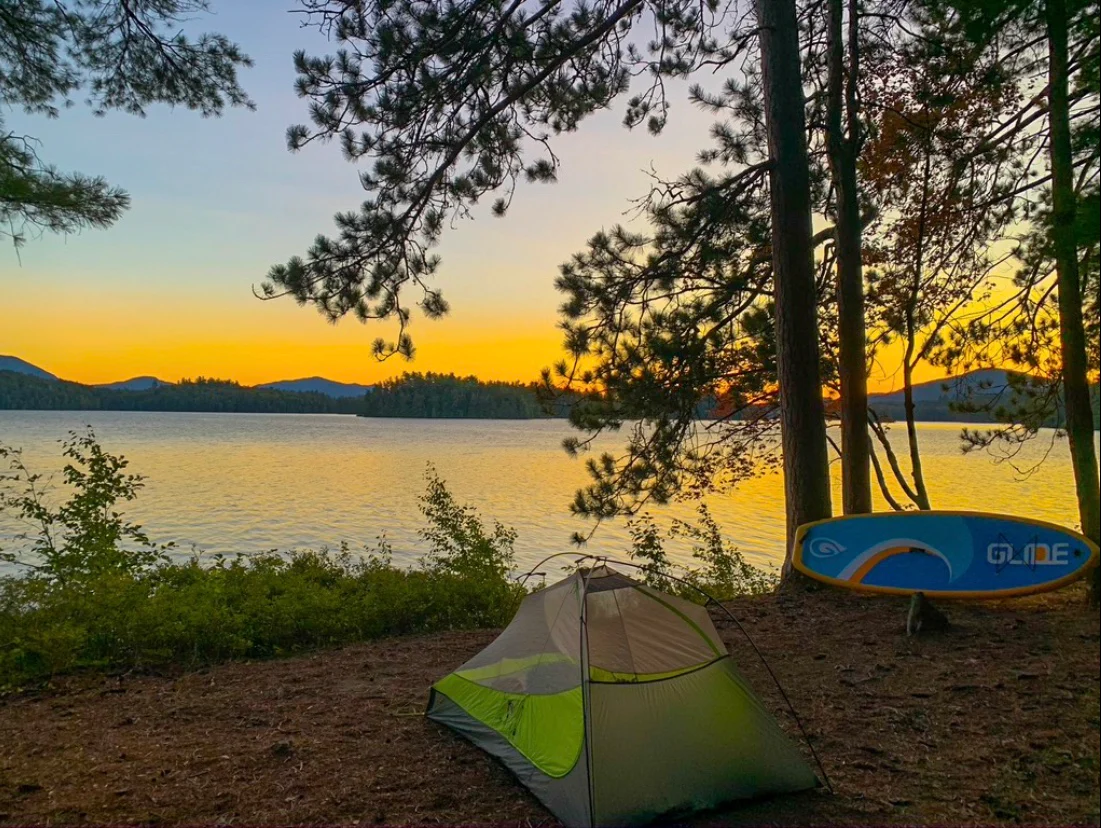
Before you hit the water, having the right gear is crucial. Here's what you'll need for a smooth and safe journey:
-
Paddleboard: Opt for a stable, durable board, ideally a touring or expedition model. Inflatable paddleboards are great for their ease of transport and storage.
-
Paddle: A lightweight, adjustable paddle that's easy to manage is essential.
-
Personal Flotation Device (PFD): Safety comes first, so a PFD is a must-have.
-
Dry Bags: These are vital for keeping your camping gear and essentials dry throughout the trip.
-
Camping Gear: Pack lightweight, compact equipment such as a tent or hammock, sleeping bag, and portable stove.
-
Appropriate Clothing: Wear quick-drying, moisture-wicking clothes and pack extra layers for changing weather conditions.
-
Navigation Tools: A map, compass, or GPS will help keep you on course.
-
Safety and Communication Devices: Include a whistle, headlamp, first aid kit, and a waterproof case for your phone.
-
Food and Water: Bring along easy-to-prepare meals and snacks, plus a water filter or purification tablets.
For example, the Glide O2 Angler is an excellent choice for paddleboard camping due to its high weight capacity and additional features like front and rear bungee cords for securing gear.
Finding the Perfect Location
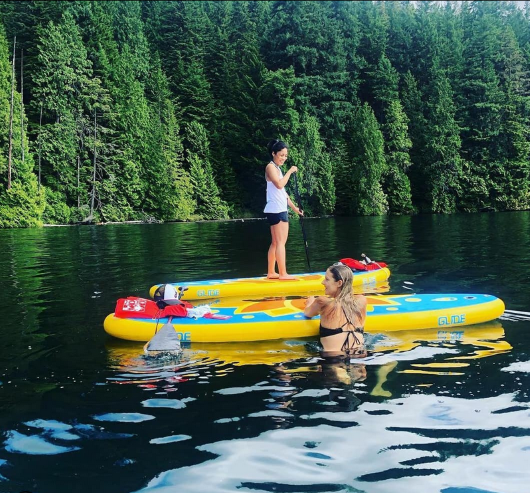
Choosing the right spot is critical for enjoying your paddleboard camping trip:
-
Water Conditions: Seek out calm, protected waters like lakes, bays, or slow-moving rivers. Check local weather forecasts to avoid windy conditions or storms.
-
Accessibility: Ensure the entry and exit points are paddleboard-friendly and that there are suitable spots for overnight camping.
-
Campsite Features: Look for established campsites with basic amenities if possible. Check whether you need to book in advance and if there are any fees.
-
Permits and Regulations: Some areas require permits for camping. Always adhere to local regulations to ensure the conservation of natural resources.
-
Scenic Value: Consider locations known for their natural beauty and tranquility to enhance your experience.
Planning Your Route and Itinerary
Effective planning is key to enjoying your paddleboard camping adventure:
-
Distance and Duration: Assess your skill level and physical condition when planning the length of your daily paddling. Be realistic about how much you can comfortably travel each day.
-
Points of Interest: Include scenic spots, potential wildlife sightings, and suitable areas for breaks in your route plan.
-
Rest Periods: Allow ample time for relaxation and exploration. Paddleboarding is physically demanding, so regular rest is important.
-
Contingency Plans: Have backup plans for bad weather or emergencies. Know where you can exit the water safely if needed.
Safety Tips for Paddleboard Camping
Ensuring your safety is paramount when on a paddleboard camping trip:
-
Check Conditions: Always verify weather and water conditions before departure.
-
Wear a PFD: This is non-negotiable. Also, attach a whistle to your PFD for emergencies.
-
Communicate Your Plans: Let someone know your itinerary and expected return time.
-
Be Prepared for Emergencies: Carry a first aid kit and know basic first aid procedures.
-
Practice Leave No Trace: Keep the wilderness pristine for future visitors by packing out what you bring in.
Making the Most of Your Trip
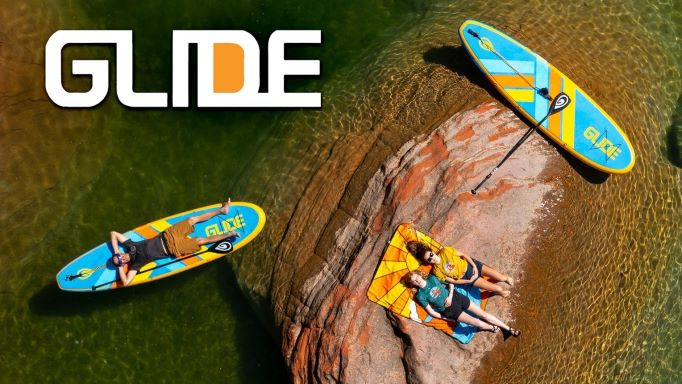
To fully enjoy paddleboard camping, consider these final tips:
-
Document Your Adventure: Bring a waterproof camera or smartphone to capture moments of your journey.
-
Embrace the Experience: Take the time to relax, enjoy the silence, and connect with nature.
-
Explore the Surroundings: When you're not paddling, take walks, watch for wildlife, or simply enjoy the peace of the great outdoors.
Paddleboard camping is an enriching way to explore nature and test your limits. With the right preparation and respect for the environment, it can be an unforgettable adventure. So gear up, paddle out, and discover the beauty of the world from your board.

